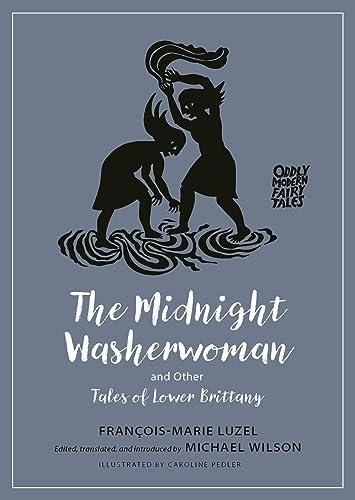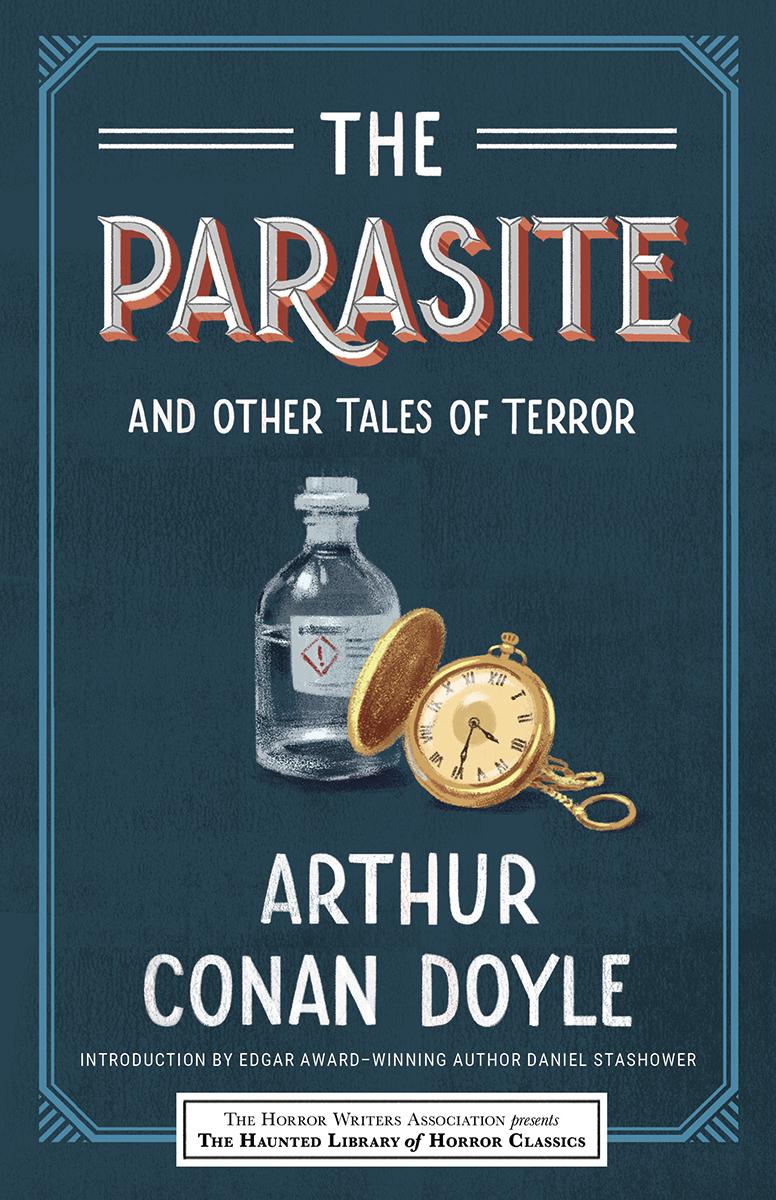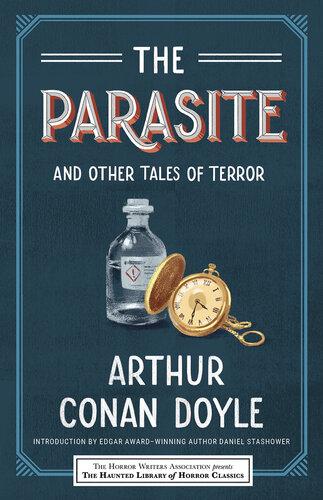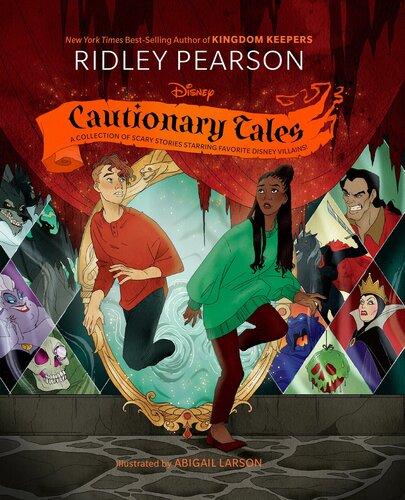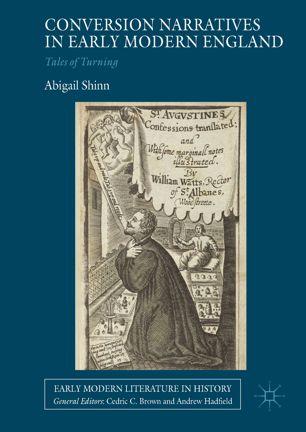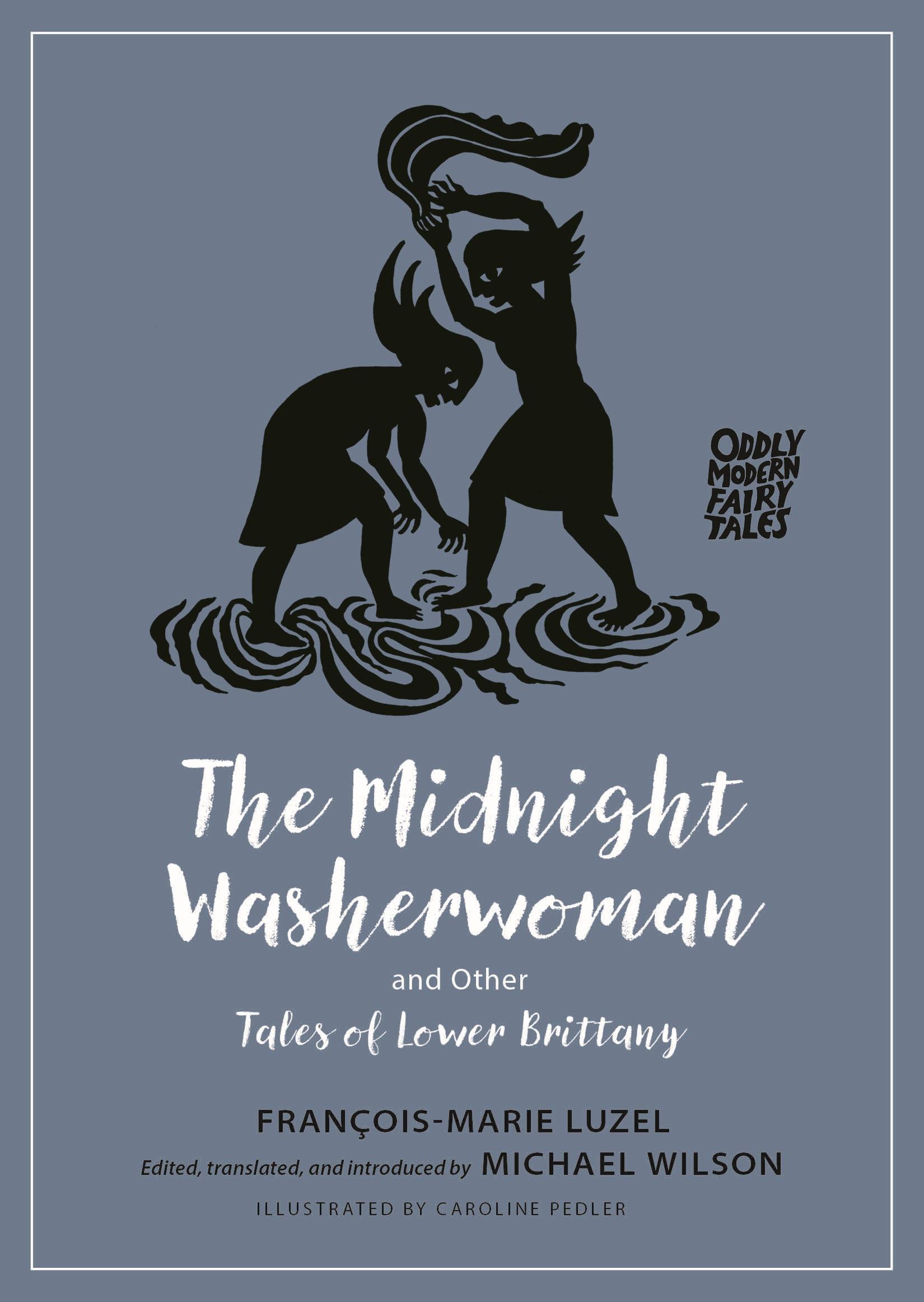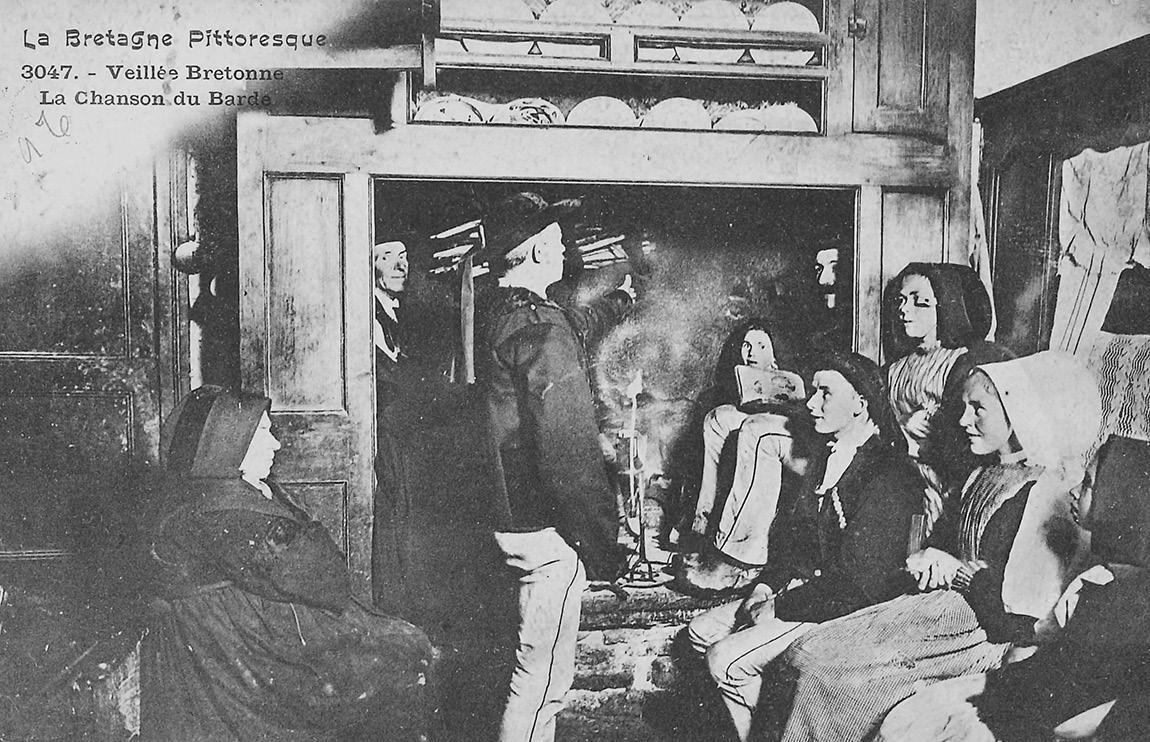The Midnight Washer woman and Other Tales of Lower Brittany
François- Marie Luzel
Edited, translated, and introduced by Michael Wilson
Illustrated by Caroline Pedler
PRINCE TON UNIVERSITY PRESS Prince ton and Oxford
Copyright © 2024 by Princeton University Press
Princeton University Press is committed to the protection of copyright and the intellectual property our authors entrust to us. Copyright promotes the progress and integrity of knowledge. Thank you for supporting free speech and the global exchange of ideas by purchasing an authorized edition of this book. If you wish to reproduce or distribute any part of it in any form, please obtain permission.
Requests for permission to reproduce material from this work should be sent to permissions@press.princeton.edu
Published by Princeton University Press
41 William Street, Princeton, New Jersey 08540
99 Banbury Road, Oxford OX2 6JX press.princeton.edu
All Rights Reserved
ISBN (pbk.) 9780691252698
ISBN (e-book) 9780691252704
British Library Cataloging-in-Publication Data is available
Editorial: Anne Savarese and James Collier
Production Editorial: Sara Lerner
Text and Cover Design: Pamela L. Schnitter
Production: Erin Suydam
Publicity: Alyssa Sanford and Carmen Jimenez
Cover art by Andrea Dezsö
Image on p. xiv: A veillée in Brittany. Collection of the author
This book has been composed in Adobe Jenson Pro
Printed on acid-free paper. ∞
Printed in the United States of America
10 9 8 7 6 5 4 3 2 1
SECOND VEILLÉE
FOURTH VEILLÉE
■ Acknowledgments
All of this originally emerged from a chance conversation one evening in London with my friend Jack Zipes. Jack was on one of his many visits to the UK and, as I had recently bought an old house on the Cotentin Peninsula in Normandy, the conversation turned to the French folklorists and one in particular: François-Marie Luzel. Luzel’s work had been neglected for a long time in France and was largely unknown outside of it. A collection of Luzel’s tales, translated for an Anglophone readership, was long overdue, Jack believed, and he encouraged me to take on the project. In the first instance, then, my thanks must go to Jack Zipes for his friendship and sound advice over the years.
I have also been helped by several people along the way and, while they are too numerous to list by name, I would like to extend my thanks to my former colleagues at the University of South Wales and Falmouth University, and my current colleagues at Loughborough University, from whom I have continually drawn collegial and intellectual nourishment, sometimes without their realizing it. In particular, I would like to express my gratitude to Patrick Ryan, who was particularly generous with his time in bringing his long experience as a storyteller and folklorist to bear upon the texts and the possible order in which they might be told in the context of a veillée.
Along the way, I have also benefited from the help of two talented research assistants, Madelon Hoedt and Marie Libert, who sifted through a mountain of material. Marie willingly checked my early translations, although the fault for any remaining errors lies entirely with me. My thanks go to both Madelon and Marie.
The illustrations for this volume were drawn by Caroline Pedler, a freelance artist and gradu ate from the world- renowned MA illustration course at Falmouth. I first met Caroline while conducting another research project in North Cornwall and am very grateful for her dedicated work on the tales.
In January 2019 I also had the good fortune to work with a dedicated and talented group of drama students at Loughborough University, who took some of the tales in this volume and devised a show that toured around a number of community venues in Northern Ireland. Their work on bringing the tales to life provided me with fresh insights. I would like to thank them and storyteller Liz Weir, who hosted us during our visit to the beautiful Glens of Antrim.
I would also like to thank Fred Dalmasso for his help with translation and everyone in the Storytelling Academy at Loughborough University. Our collective efforts in the exploration of storytelling continue to nourish and sustain.
I would also like to extend my gratitude to colleagues at Princeton University Press, whose patience, expertise, and professionalism were invaluable in turning what was an overly long document, strewn with Briticisms, into a book that people might actually want to read. They are Anne Savarese, James Collier, Kim Hastings, Sara Lerner, Susan Clark, and Sydney Bartlett.
Last, but not least, I would like to thank my wife, Jayne, and the rest of my family for their love, support, and tolerance of my disappearing into my study for hours on end instead of doing all the jobs around the house that are still waiting to be done to this day.
Paignton, England
December 2022
This is a book about storytelling. That is to say, it is a book about stories, the storytellers who told them, the listeners who heard them, and the events at which they were performed.
They were all collected by the folklorist François-Marie Luzel (1821–1895) in his home region of Lower Brittany, particularly around his hometown of Plouaret and the neighboring villages. His storytellers were often people already known to him and they usually told their stories in the Breton language, which Luzel then translated into French for a wider readership.
Most nineteenth- century folklorists’ “entry into oral literature was facilitated by a network of personal contacts—servants, kin and neighbours” (Hopkin 2012, 210), and Luzel was no different in this respect, collecting many of his stories through face-to-face interviews. Either he would seek them out or they would come to visit him with their stories, and he would scribble out their words, as accurately as possible, as they spoke, often asking them to stop and repeat sentences, before making a fair copy.
As befitted a scholar of his time, he engaged in extensive correspondence with other folklorists and intellectuals (see, for example, Luzel 1995g), but unlike some other folktale collectors, he did not rely on a network of far-flung correspondents sending him written versions of stories they had heard. For many of his contemporaries, this was a necessity, as travel to remote areas could be difficult and expensive, or even linguistically impenetrable. Luzel, however, found himself ideally located:
Given the nineteenth- century assumption that their role was to salvage the wreckage of past centuries, folklorists expected
to find this best preserved at the fringes of the cultural realm. Brittany as a whole was considered one such “relic region”, isolated both by language and a deeply religious culture, which is why the province was so important to the development of folklore studies in France as a whole. (Hopkin 2012, 33)
Luzel and his sister Perrine (1829–1915), his occasional (and sometimes unacknowledged) collaborator, did not have to venture far to collect the material he sought. It also meant that he was in the enviable position of being able to collect stories in their authentic context, that is, not in the study or parlor of the bourgeois scholar, but at the veillées, the social gatherings that took place in the houses and cottages throughout Brittany during the winter months of darkness, where communities of family and neighbors would come together to share news, gossip, stories, and songs.
Luzel had access to these events not only because of geographical proximity, but also because he had been attending veillées since he was a child; many took place in his own home. They were an essential part of his own cultural upbringing and education, and he instinctively understood them as cultural events with their social conventions and dynamics. When he attended veillées, he did so as a member of the community and a participant in the events himself. He had both physical and cultural access to these events. This might have been far removed from the notion of the detached observer and his insistence on the application of scientific principles to the study of folklore, but it makes for a fascinating conflict in Luzel’s work between his roles as scientist and community member.
Unlike many of his contemporaries, Luzel not only diligently recorded the veillées in which he participated but chose to publish many of the stories he collected within the context and frame of
the event at which they took place, giving us access to a kind of ethnography of his own community through the conversations and social activity that took place around their telling. The amount of contextual information that Luzel provides goes far beyond what was common at the time.
It also means that we can fully understand the stories Luzel collected only by considering them in their performative context. The tales published here are not intended as authoritative fixed literary texts, set in stone, but as oral stories should be: as living, fluid, unstable, and unreliable texts that tell us about the daily lives of those who told them, just as if we take them off the page today and refashion them for our own telling, they become stories that form part of our own reality. As Jean Markale remarks in his introduction to Contes populaires de toutes les Bretagne, “there is no certainty, only what is probable, and the probable is merely transitory” (2000, 14).
This book is not intended to be primarily a work of comparative folklore, seeking to place these stories within a wider body of French, European, or world folk narrative traditions by identifying common and shared motifs and structures. I have provided some comparative information in the notes to each story at the back of this volume, but I have deliberately restrained myself in this respect. I hope I have provided enough information for the general reader and some starting points for those who wish to pursue this route more seriously.
I invite the reader, therefore, to look at these neglected stories first and foremost as performance texts, or perhaps improvised theatrical texts, to which I have added some information and thoughts about who performed and collected these particular versions, why and where they were performed, and to what purpose. To think of these texts as “theatrical” does not, of course, in itself
imply “theatricality” in the way they were performed.1 Rather, the evidence suggests a more conversational delivery. Nevertheless, as a theater scholar and before that a professional storyteller, I have tried to bring my own way of seeing, reading, and understanding things—the sensibilities of the performer—to this project and I hope that the result will be of interest to a range of readers. More than anything else, though, I hope people will take these stories off the page and tell them again in their own way, to fresh ears, in ways that make Luzel and his storytellers not our predecessors but our contemporaries.
The Midnight Washer woman and Other Tales of Lower Brittany
■ Introduction: François- Marie Luzel, Folklorist of Lower Brittany
In September 1895, the following obituary appeared in Folklore, the journal of the Folklore Society in Britain:
Breton folklore has sustained an irreparable loss in the death of M. Luzel, on the 26th February last, at the age of seventyfour. It is almost impossible to over- estimate his services in rescuing the folklore of his nation from the bands of romancers and poets. Far be it from us to undervalue poetry and romance. They are frequently among the highest and most valuable efforts of the human intellect; but when they are deliberately palmed off on an unsuspecting public as the genuine products of the popular imagination, of which in reality they are only the bedizened and distorted presentment, it is time for all who have any regard for truth and any feeling for traditional poetry and humour to protect and to show, if they can, a more excellent way. Leaving to others the work of criticism, M. Luzel set an example to collectors of folklore in Brittany; and it is to his example that we owe the admirable work of M. Sébillot, M. Le Braz, and others who are proud to reckon themselves his disciples. His splendid collections of tales and songs from La Bretagne bretonnante are prized by all students of the subject, and will long keep his memory green and fresh as the pioneer of the Science of Tradition in Brittany.
While it is in the very nature of obituaries to focus on the positive achievements of an individual, this is a generous testimonial for a folklorist who rarely left his native Brittany and who did not enjoy the privileged upbringing of most of his contemporary folklore
scholars. Most remarkable about the obituary is its specific reference to his battles with “the bands of romancers and poets,” as he bore the standard of a scientific approach to the study of the Breton folktale. The leading romancer and poet referred to here is Théodore Hersart de La Villemarqué, an aristocrat-born antiquarian who, according to Luzel’s biographer Françoise Morvan, had—like many aristocrats who had lost their privileges following the Revolution—reinvented himself as the proud defender of a traditionalist Celtic nation (1999, 15–26). La Villemarqué was everything that Luzel was not, and their long rivalry has come to symbolize much more than positional differences in relation to the collection of folklore, but also the polarities of Breton, and indeed French, nationalist politics. This dispute still rumbles on today between scholars and Breton cultural activists and can in part account for the fact that, despite the volume and importance of Luzel’s work, it has often remained out of print in France and has appeared in translation only in modest quantities before.1 Nevertheless, just as the next generation of folklorists, such as Paul Sébillot (1843–1918), arguably the most important scholar of Breton folklore, and Anatole Le Braz (1859–1926), might have counted themselves among Luzel’s supporters, so Luzel’s work also ranks in significance alongside that of the generation that followed them: Arnold van Gennep (1873–1957)2 and Paul Delarue (1889–1956).3
There is some confusion around the date on which FrançoisMarie Luzel was born. Archival records give different dates and years, but it seems most likely that he was born on 21 June 1821. More certain is that the event took place in the family home, the manor of Keramborgne (Keramborn in Breton) in the commune of Plouaret.4 His family were Breton-speaking farmers with Republican leanings (the manor had come to the family as a result of Luzel’s grandfather’s being a “Capitaine de la Garde Nationale” during
the Revolution) and had some education. They were certainly not poor, but nonetheless their existence would have had a degree of precariousness about it. Moreover, it was a life that was inextricably tied to the land and the local community.
An early influence on the young Luzel was no doubt his attendance at the veillées held at the family home in Plouaret, the winter evening gatherings around the fireside with neighbors and visitors when time would be given over to storytelling and singing. In his later years, Luzel wrote about these events and the magical atmosphere that they evoked and he did so not without a little nostalgia.
Of most significance, though, is the influence exerted on the young Luzel by his uncle Julien-Marie Le Huërou, a teacher at the Collège royale de Rennes. In 1835, the young Luzel himself was sent off to the Collège for his secondary education and at first felt completely bewildered and constrained by his new life. However, his uncle was a keen scholar of Breton culture and encouraged Luzel in the same field, introducing him to many of his friends with similar interests. It was a turning point for Luzel and he immersed himself in his academic studies, discovering an aptitude for scholarly activity.
Le Huërou’s approach to his research is interesting, because it very much mirrors the philosophical and political positions later adopted by Luzel in his own professional life. Le Huërou sought not to establish Breton as a language and culture with its own purity but to set it in the context of the greater family of European cultures and languages. He also rejected many of the Breton stereotypes, such as the cult of druidism, that were being promoted by many of the early Breton folklorists. Not surprisingly, when La Villemarqué published Barzaz Breiz, a collection of traditional Breton songs, in 1839, Le Huërou was highly critical.
Luzel’s adult life seems to have been largely dominated by two features: first, a tension between his work as a folklorist and the
need to earn money, and second, a difficult relationship with the “establishment.” Luzel achieved no university-level qualifications and never held an academic post. He tried his hand at teaching many times but found himself dismissed from numerous positions. There may well be some truth in Morvan’s suggestion that he was the victim of an establishment that disapproved of his political and anticlerical opinions, but equally likely Luzel was a less than enthusiastic teacher, primarily focusing his energies on his collecting work.
Although today Luzel’s reputation as a folklorist is largely based upon his collections of folktales, his early folklore work had focused on the traditional songs and dramas of the region. It was not until 1870 that he published his first collection of tales, Contes bretons, which contained six tales, three of which were published bilingually. Coincidentally, but not insignificantly, 1870 was the year of the disastrous Franco-Prussian War, after which “the French folklore movement suddenly flowered, with the quickening of interest in philology, archaeology and ethnography. These were the years of the founding of journals and societies, of the cultivation of the cultural sciences, of the quest for the Celtic, Romanic, medieval, and peasant contributions to the French soul” (Dorson 1968, vii). Luzel was fortunate enough to be there right at the beginning of this golden age that lasted until the outbreak of the First World War.
It was in Quimper, where Luzel took a position as archivist for the Department of Finistère, that he met and befriended Anatole Le Braz, who became one of the most celebrated of the new generation of Breton translators and folklorists. Le Braz became not only Luzel’s disciple, despite his more avowedly nationalist tendencies, but also his literary executor.
A more important ally for Luzel, though, was the writer and philosopher Ernest Renan (1823–1892). Luzel and Renan met at
the end of 1857, while Renan was head librarian at the Bibliothèque nationale, and they remained friends until Renan’s death thirty-five years later. Renan represented the scholarly establishment. Whereas Luzel was largely self-taught, Renan had a doctorate and led a respectable academic career. Whereas Luzel was anticlerical, Renan had trained to become a priest, although he never took his vows. What brought the two men together, apart from their native Brittany, was an interest in philology (particularly in the relationship of Breton to other languages) and a deep suspicion of the work of the earlier Breton folklorists such as La Villemarqué. In fact, it was with Renan’s encouragement that Luzel took on La Villemarqué over the Barzaz Breiz. In return, Renan used his influence to help secure funding for Luzel to carry out his collecting expeditions. Luzel’s relationship with the establishment had always been problematic, but Renan lent him some respectability and in 1890, two years before Renan’s death, Luzel was made a Chevalier of the Légion d’honneur, an occasion made more poignant by the fact that the honor was bestowed by his old rival La Villemarqué. Five years later, both were dead, Luzel in February 1895 and La Villemarqué in December of that same year. Luzel’s final collection of stories, Contes et légendes des bretons armoricains, a collection of five stories compiled and edited by Le Braz, was published posthumously in 1896.
Luzel the Folklorist
In his essay on Giuseppe Pitrè (Zipes and Russo 2009a), Joseph Russo presents a picture of the nineteenth- century collector of Sicilian folktales as a man ahead of his time. His practice of collecting multiple variants of the same story, of recording often detailed notes about the way individual storytellers performed their stories, and of retaining within the texts the “inconsistencies and non sequiturs” (23)
that are a common feature of oral storytelling, arguably make Pitrè and Luzel methodological bedfellows. However, to describe Luzel as a man a century ahead of his time may require some qualification. While his working practices, his approach to the study of the folktale, and much of his thinking around its significance were indeed very progressive when compared to those of many of his contemporaries, Luzel was also a man very much of his time. He may have had what now seem to us extraordinarily modern insights, but he did so from the point of view of a nineteenth-century scholar. What makes Luzel stand out from many of his contemporaries is perhaps his willingness to collect and publish variants of the same tale. The modern folktale scholar would, of course, do exactly the same, attributing the differences between collected texts to the contextual conditions that governed the performance of the telling. As David Hopkin explains:
While their nineteenth- century predecessors (under the influence of nineteenth- century textual scholars) attempted to reconstruct ur-texts from the multiple variants at their disposal, twenty-first-century folklorists (like twenty-first-century textual scholars) study the variants themselves. The mouvance or variance between texts, to borrow terms used by medievalists, is meaningful when related to the specific social contexts in which they were performed. (2012, 26)
Among others, Richard Bauman’s seminal text on performative approaches to storytelling analysis, Verbal Art as Performance (1984), proposes that a storyteller is engaged in a framed process of communication, that is, “performance,” at the moment of telling and that the detail of the performed text (including the words spoken,
the manner of speaking—volume, cadence, rhythm, and so on—and any accompanying physical language, such as gesture or facial expression) is entirely determined by the context of that moment. Some elements of that context may be within the storyteller’s control; others may not. Thus, what is spoken and how is determined by who speaks it, to whom, and when and where, resulting in a potentially infinite number of story variants of equal value and currency. It is, as Peter Bogatyrëv and Roman Jakobson posited as early as 1929, that “only the language of a specific person at a given time represents reality” (1982, 34).5 This notion of folklore as process, variance as the norm, and storytelling as performance has been well established in the field of folklore for the best part of fifty years or more and is the fundamental principle that separates most modern folklore scholarship from that which preceded it. In this way, the modern folklore scholar may be thought of as being just as interested in the difference between variants of a story as in their similarity, and able to derive meaning from differences and how they arose (see Hopkin 2010, 36). Indeed, variation, not similarity, it could be argued, is the key to unlocking meaning in any given text.6
Luzel was interested in variation for quite different reasons. For much of the second half of the nineteenth century, the folklore scholarly world was divided into two rival camps. On one side were the followers of solar or comparative mythology, as first expounded by the German-born Oxford professor Max Müller in 1856 (Dorson 1986, 165). This theory proposed that folktales had their ancient origin in solar my thology. Over the centuries, these myths were thought to have “degenerated” into folktales but the older symbolism was still evident within them. As such, all stories had fixed meanings and fixed symbolism, relating to ancient solar deities, and characters within stories could be classified by type. Furthermore,
the key to unlocking meaning lay in the study of language and by making philological connections. By 1873, the theory had already been robustly challenged by Andrew Lang and his followers in the “anthropological” camp, whose counterproposal took Darwin’s theory of evolution as its inspiration and created the notion of “cultural evolution.” Lang’s theory proposed that societies that were at similar stages of cultural evolution could produce similar cultural artifacts without ever having been in contact, thus allowing for variants of the same tale type to be created independently of each other. Aulikki Nahkola summarizes that “while Müller’s work represented a degenerative view of human culture, Lang built his theory on a model of evolutionary anthropology” (2001, 123).
In his introduction to Contes populaires de Basse-Bretagne, Luzel steers a diplomatic line between the two systems, proposing “mythological eclecticism” over an absolutist adherence to one or the other (1887, vii). For Luzel, the study of folktales had to be founded upon a robust scientific approach.7 Furthermore, by reducing the texts of the same story down to a set of key shared symbols, a single, authoritative meaning can be determined, allowing for the classification of the story. This might sound like a reductive approach to us these days, but to Luzel and his contemporaries, applying scientific principles to stories, in the way one might to botany, for example, afforded folktales a status they would not otherwise have. At the end of his introduction to the first volume of Contes populaires, Luzel makes an impassioned plea to the next generation of folklorists:
This is, in effect, the literature of the unschooled and the unfortunate, who know how to neither read nor write . . . and . . . we must . . . love it, respect it and hasten to collect it, at the very moment when it is in danger of disappearing forever. (xix–xx)
Luzel was on a mission to do for the Breton folktale what the Brothers Grimm had done for the German folktale (Luzel 1995a, 16) and his deep respect for the storytellers he collected from meant that he published each story as he heard it, in the exact words told to him. However, as Hopkin so rightly reminds us, “for no nineteenth- century folklorist did fidelity mean exactitude” (2012, 41). Luzel did not follow the strict principles of accurate transcription of the modern scholar nor could he, given that he did not have recourse to electronic recording equipment. Neither was he averse to a little editing and correcting here and there to make things more comprehensible to the reader, but his editorial hand was lighter than that of many of his contemporaries and he did not try to tidy up internal narrative contradictions, omissions, or non sequiturs. Luzel did not take multiple variants and reconcile them into a single definitive version of a particular story. For him, the authenticity of the tale lay in the fact that stories changed depending on the teller and the audience and that an eagerness to embellish a tale with episodes from other stories, in order to keep the interest of the listener, is a characteristic of the Breton storyteller (1887, ix).
Collecting multiple variants was also central to Luzel’s scientific approach—the analysis of a story to decode its true meaning lay not in the construction of a composite version but in the comparison of di fferent variants of the same story, which would allow the scholar to identify common motifs and episodes. So, whereas the modern folklorist may derive meaning from the difference between variants, Luzel derived meaning from similarity. Furthermore, while Luzel’s attitudes were surprisingly modern in some respects, he did not look for meaning in the moment of performance, in the way we would today. Indeed, he would not have understood the meaning of “performance” in our sense. His understanding of folklore was chronological and archaeological. The folktale existed as an ancient
preindustrial relic and the folklorist’s duty was to collect and preserve it before it died out—a race against time before it decayed altogether.
Yet even in this respect Luzel’s attitude is more complex than might at first seem. For a start, his apparent affinity and empathy with his informants, particularly his two main storytellers, Barba Tassel of Plouaret, who at the age of seventy-two was still delivering on foot telegraphic dispatches and official communications from the local mayor (1887, x), and Marguérite Philippe of Pluzunet, meant that Luzel was fully aware how much the harsh social realities of nineteenth-century peasant life in Brittany were reflected in the tales. These were stories of social struggle and survival, where the poor pitted their wits against the wealthy and the powerful, and usually came out on top.8 They often reflected a thinly disguised hatred of the seigneurial system and displayed a natural sympathy, Luzel felt, with the poor and downtrodden, reflecting a world where the underdogs were the natural heroes, overcoming all kinds of trials and battles with the forces of evil and stupidity (1995a, 13). Ancient tales whose origins lay in the mists of time, these were stories that had been updated to reflect the daily struggles of the people who told them. Luzel was critical of earlier studies that simply reflected vague memories of traditions, written as if they were genuine but failing to capture the authentic popular voice (10).
Nineteenth-century folklorists also commonly believed that the further back a story or song could be traced, the more “authentic” it was. This drove Luzel’s keen interest in the folktale as a form, which he believed to be much older (and therefore more authentically Celtic) than forms such as the folksong or poem. Folklorists often sought out storytellers in the farthest reaches of Europe, far from the centers of civilization, untouched by the industrial revolution, where agrarian communities and ways of life persisted. If folktales were vestiges of earlier civilizations, then it stood to reason that the
best and most authentic storytellers would be found in those parts of the world that remained untouched by the civilizing hand of Western thought, the Enlightenment, industrialization, and capitalism. This might seem questionable today, but it led folklore collectors in Britain, for example, to venture out to the west of Ireland and the Highlands of Scotland, leaving the cities of London and Manchester to the social observers and political philosophers. The more remote—the more “savage”—the better.
In his “Deuxième rapport” (1995a, 125–31), Luzel recounts his journey into the remote inland area of Cornouaille, around the mountains of Avez. In contrast to the areas nearer to the coast that had benefited from contact with other cultures through trade and the fishing industry, isolated communities existed here. Luzel may have set out on his mission with the hope and expectation of a fruitful journey, but he had a pretty miserable time of it. Not only did he have to tolerate the discomforts and indignities of traveling everywhere on foot, but he considered the material he collected inferior to what he had collected in the coastal towns and villages. It may not be surprising, on reflection, that Luzel had greater success in collecting stories from within his own and neighboring communities, where he was known, than in remote areas where the villages and their inhabitants were unfamiliar to him, and vice versa. Luzel, however, came to a different conclusion. Contrary to popular opinion at the time, he determined that, far from diluting the purity of traditions, contact with other cultures strengthened and enriched folk traditions with new ideas, thoughts, and stories.
If Luzel’s career as a folklorist is remembered for one thing, it is for the controversy around La Villemarqué’s Barzaz Breiz, which was
The Barzaz Breiz Controversy
the cause of a deep disagreement and an ideological split that rumbled on for many years. On the surface, Luzel and La Villemarqué make perfect rivals, one the precocious and affluent son of aristocratic stock, the other from a modest Republican background, impecunious for all his professional life. Their quarrel came to symbolize the animosity between two different positions within the complex and fraught world of Breton nationalist cultural politics and still divides the community, with Barzaz Breiz continuing to be celebrated by Breton cultural nationalists through the twentieth century (Gemie 2007, 47).
The relationships between Brittany and the rest of France, and its associated politics, are both complex and ever- changing.9 While contemporary Breton nationalism is more closely associated with the politics of the progressive Left—according to Gemie, “Bretons are more likely to adopt pro-European union attitudes than other French people, and significantly less likely to vote for the far-right Front National” (9)—the predominant leaning has previously been toward conservatism, and the nationalist movement is still partially tainted by its attitude toward the Vichy Government during the years of occupation.10 In the nineteenth century, the relationship was equally complex and, at times, contradictory.
The renaissance of interest in Celticism at the beginning of the nineteenth century was in response to both the rise of romanticism and the postrevolutionary nation-building agenda in what was a country widely fragmented by language and cultural traditions.11 The “othering” of Brittany as a place of refuge and remoteness, representing the relics of France’s Celtic past, sought to legitimize it as a distinctive part of the wider nation, but as an alternative to the centralizing, post-Enlightenment, and anticlerical tendencies of the Revolution and “an instrument for the conservative right to use against the revolutionary legacy” (Gemie 2007, 43).
Théodore Hersart de La Villemarqué was born in 1815 into a pro-Royalist family with aristocratic connections and, although he became disillusioned with the restored monarchy, his instincts remained deeply conservative and pro- church, in contrast to Luzel’s strong anticlerical roots. La Villemarqué was certainly no separatist, though. His belief was that Breton culture reflected the true character of the French nation and he proposed a “reorientation of French culture . . . with Brittany to be the focus for the new order” (Gemie 2007, 48), drawing inspiration from Breton culture for a simpler, more spiritual way of life. Barzaz Breiz was intended as a tool in this campaign, linking Celticism to Christianity, that expressed “codes of morality and spirituality which would inspire the French people to return to a Celtic and religious mode of being” (Gemie 2007, 48) and it secured La Villemarqué’s reputation as one of the most important antiquarian scholars of his generation. Luzel first raised his suspicions around the authenticity of the songs contained within the volume in 1868, but it was four years later, in 1872, that the row burst into the open, after Luzel spoke at the Congress of the Breton Association in Saint-Brieuc, condemning Barzaz Breiz as a fake and accusing La Villemarqué of manufacturing the songs contained within the book. Luzel’s suspicions were at least in part owing to La Villemarqué’s use of unified Breton, a form of the language that was free of the influence of other languages, whereas the Breton used by Luzel’s singers and storytellers inevitably bore the hallmarks of other linguistic influences, especially French. Others, including Renan, shared his concerns and Luzel came under pressure to publish his own collection of Breton songs, Gwerziou, that when placed alongside Barzaz Breiz would expose the earlier work as fraudulent. The plan was to publish Gwerziou in two volumes, the first covering epic verse, the second containing sentimental and romantic poetry, thus mimicking the
structure of Barzaz Breiz. The first volume, published in 1868, sold only twenty subscriptions (Morvan 1999, 179) and the second volume did not appear until 1874.
Recent works by scholars such as Donatien Laurent (1989), Nelly Blanchard (2006), and Ellen Badone (2017) suggest that while the songs in Barzaz Breiz were very heavily edited, even rewritten into composite versions, by La Villemarqué, he was nonetheless familiar with the range of Breton dialects and worked with texts that he had genuinely collected. On this basis, it is difficult to condemn La Villemarqué. The Brothers Grimm, who inspired the work of early folklorists from the first half of the nineteenth century, were themselves heavy editors of the stories they collected and created composite versions from multiple variants. In Luzel’s opinion, the quarrel was a disagreement between two methods, with the exponents of the new scientific method eager to discredit those who hung onto old practices. We should be careful not to denounce La Villemarqué from the position of the twenty-first- century folklorist, who would operate with quite different principles.
Luzel and Breton Culture
Sharif Gemie (2007) asserts that prior to the Romantic period the distinctiveness of Brittany, including its language, was thought of as being no more or less significant than any other region of France, but the idea of Breton nationalism emerged from the rise of Celticism in the early 1800s. By the time Luzel had grown up, a movement to preserve, protect, and promote Breton culture was already established, even though it was still in its relative infancy. In other words, Luzel was entering a world where a sense of distinct Breton identity was gathering pace and yet there were still opportunities for people like him to make a definite contribution to the
formation of that identity and how it might relate to the wider French and other regional identities.
There can be no doubt that Luzel was fully committed to this project for all of his life. In addition to his folklore work, he published poems and other literary works in Breton under various pseudonyms, and lobbied for schools to teach the Breton language, as the principal defining characteristic of the region.
The central problem for Bretonists was that there was very little written historic record, so folklore (and particularly the folktale) was seen as serving an important function in providing an alternative historical record of the Breton people. In fact, the situation was not unlike that faced by Jacob and Wilhelm Grimm when they began collecting folktales in Germany. In his book Nations, Identity, Power: The New Politics of Europe, George Schöpflin recognizes “the potential importance of memory to forms of nationhood” (2000, 74) and a written historical record and a literature are critical elements in the memory-making process. When the short-lived Académie Celtique was founded in 1804 (see Senn 1981), it naturally turned to folklore as a way of finding a route back to the region’s Celtic heritage in the face of a distinct lack of written artifacts (Gemie 2007, 42).
Emile Souvestre was in a nostalgic mood when he wrote in 1849:
it is above all in the countryside that we have tried to rediscover the popular tradition. There, among isolated families with fixed lives, away from the great events which disrupt their conduct, without books, the traditions of storytelling has (sic) been preserved. (quoted in Gemie 2007, 42)
It is not surprising, then, that when Luzel published Contes bretons in 1870, his first volume of folktales, he felt that this was the most important phase of his work.
